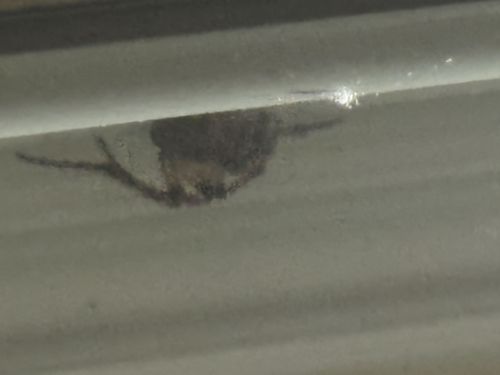Funnel Weaver Spider (or Grass Spider)
Scientific Name: Agelenopsis (a common genus of funnel weavers)
Order & Family: Order: Araneae, Family: Agelenidae (Funnel Weavers)
Size: Body length typically ranges from 10 to 20 mm (0.4 to 0.8 inches) for females, and males are similar in size or slightly smaller. Leg span can be larger than body length.

Natural Habitat
Commonly found outdoors in grassy areas, gardens, shrubs, logs, and under rocks. They also build webs around homes, in corners, attics, and basements where they can find suitable anchor points for their webs.
Diet & Feeding
Mainly small insects and other invertebrates that get caught in their web. They are opportunistic predators.
Behavior Patterns
Funnel weavers are known for building distinctive funnel-shaped webs, often in dense vegetation, grass, or around structures. The wider, sheet-like part of the web serves as a snare for prey, while the narrow, funnel-shaped retreat is where the spider typically waits, ready to dart out and capture any insects that land on its web. They are generally shy and will quickly retreat into their funnel when disturbed. They are typically active at night.
Risks & Benefits
Risks: Generally considered harmless to humans. Their bites are rare and typically result in only mild, localized pain, redness, and swelling, similar to a bee sting. They are not considered medically significant. Benefits: They are beneficial predators in the ecosystem, helping to control populations of various insects, including some common pests.
Identified on: 9/2/2025